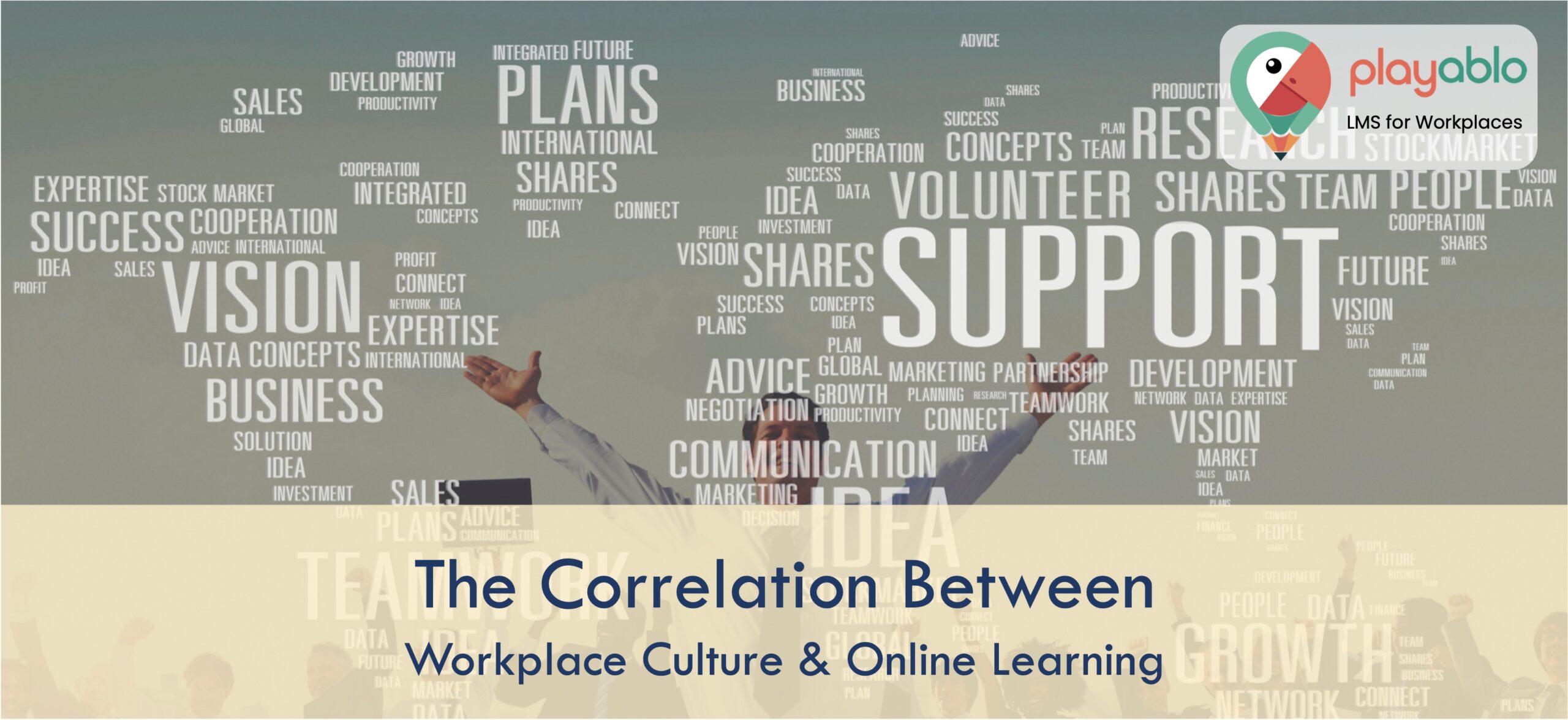The unique recipe of successful companies is their workplace culture. Employees feel confident, motivated, and safe when working in an organization with a positive environment. Poor workplace culture, however, can lead to stress and dissatisfaction. Finding the correct balance can be difficult. Even when a company performs a fantastic job hiring personnel, harassment, poor behavior, and miscommunication will still arise and harm the organization’s culture, making sure employees feel uneasy and uncomfortable. Companies must take the initiative to recognize and resolve these concerns. But how widespread is bad behavior and harassment, and what could be done to address it? Let’s check that out first.

Table of Contents
A Workplace Culture of Bullying and Harassment
Bullying and other forms of inappropriate behavior do not end when a person has left school, even though it is not a subject that is frequently discussed. Bullying in the workplace is a serious issue that affects up to 75% of employees. Moreover, up to 19% of workers have been victims of workplace abuse. This isn’t simply a problem for tiny businesses lacking Human Resources; major enterprises frequently have a toxic workplace culture that makes employees feel uncomfortable or anxious.
Psychological Issues in the Workplace
Bullying, misogyny, harassment, and other forms of improper behavior can significantly influence employees’ mental well-being, in addition to being entirely wrong and humiliating. Mental health affects an individual’s psychology and productivity, and capacity to work collaboratively in teams. When people are harassed and threatened, they may experience tension, stress, or depression. While there are strategies to promote emotional health at workplaces, it is up to employers to provide a friendly and happy workplace culture.
Apart from these two issues, workplace culture includes shared values, company belief systems, attitudes, and common assumptions. This is a result of individual upbringing alongside social and cultural context. The glue that keeps everyone together is your workplace culture. It sets the standard for workers by giving meaning to all work-related activities. Each of their job tasks brings them another step closer to attaining common goals and contributing to the organization’s success.
Can Online Training Help to Address the Issues mentioned above?

The process of repairing a toxic workplace culture is multidimensional. An organization can use various measures to guarantee that workers adjust and avoid undesirable conduct while also enhancing the effectiveness of communication and tolerance. One of these stages is to improve awareness and education, which may be done using eLearning technologies.
But what is virtual classroom or online module? An online course, for instance, can be used to instruct staff on appropriate behavior without them feeling insecure or being singled out in a group environment. eLearning could also be utilized to help the entire organization understand prevalent mental health concerns and how their behavior affects them. Compassion, communication, and tolerance can be acquired with the correct mindset, curriculum, and environment.
Online classes and seminars, quizzes, or even gamification in learning are part of an eLearning program. Nevertheless, for eLearning to successfully stimulate workplace culture, the learning process must be integrated into the community’s core. Learning should be anticipated, and workers should feel encouraged to put what they’ve acquired into practical use. So, where does this learning culture need to begin? Of course, at the very top.
Ad: PlayAblo’s Enterprise-Grade Micro-Learning platform is built for millennial learners. Micro-Learning, along with assessments and gamification features, ensures learning outcome measurement and sustained engagement.
Find out more and request a custom demo!
Innovative Strategies to Use eLearning in Improving Workplace Culture

Many companies struggle to know where to begin when improving their workplace culture and making personnel feel more at ease at the office. The great news is that starting at the summit is the best starting point. To establish the standard for the rest of the organization, it is critical to have the top leadership’s buy-in.
Among the most crucial advice for businesses looking to establish a learning culture is to incentivize rather than enforce. No one will learn about proper conduct if they are unwilling to learn. Incentivizing the method guarantees that almost everyone adapts, even if they are hesitant to accept the changes that come with better behavior. You won’t be able to persuade everybody to care about these concerns, but you might be able to convince some of them through eLearning.
Let’s now go through some tips on how to integrate eLearning into your workplace culture:
Demo Videos for Messages
Demonstration clips ought to be relevant and focused on your brand. For instance, utilize your sales department as the background and have personnel dressed in corporate uniforms. Include workplace practices and scripted conversation, including the welcome message that every team member must give to consumers as they come in through the door. Include actors or staffers who properly embody your company image above everything else.
Your team is made up of a varied range of personalities and abilities. On the other hand, video demos should communicate your company’s brand and the attitudes you aspire for on the job. Develop follow-up materials if you’re using supplier product demonstrations to stay on message. For example, a quick instruction about how to pitch and demo the product to buyers, depending on your company policies.
Serious Games with a Purpose
Create serious games which emphasize your company’s ideals, problems, or concerns that distinguish your business and the industry gap you fill. For instance, your company takes pleasure in providing exceptional customer service and going beyond that to discover the correct product. Or, you have no tolerance for harassment and misogyny.
As a result, your game-based learning may include levels that explore various abilities or duties associated with this value. Every level introduces a new challenge for employees to face to demonstrate their competence and beliefs. All elements, from the actors and their clothes to the in-game surroundings, should be consistent with your workplace culture and brand identification.
Exercising Your Brand Identity in the Real World

Employees can know how to apply real-world knowledge to address work-related issues by looking at examples. They may, however, give your workforce a sense of your brand’s identity and messaging. Include genuine people and difficulties that employees face daily. Then, when interacting with clients or coworkers, integrate it with guidelines and brand cornerstones that staff should follow. One of your main ideas, for example, really is to know your female co-workers and make them feel at home. Your real-life example takes learners through the intro process and shows them how to establish a positive relationship with women colleagues quickly.
Nike is a fantastic illustration of this, as the firm had issues right up to the executive level. Several of Nike’s senior executives have been accused of workplace sexism, which has resulted in a toxic workplace culture of harassing and unacceptable behavior that has made many female employees uneasy. Staff members were asked to leave via PowerPoint presentations in other instances, and those who had objections were made to resolve them with HR in an open session. Unfortunately, Nike isn’t the only firm with a bullying and harassment culture, but it can serve as an example of how not to do things.
An Atmosphere That is Recognizable in Simulated Scenarios
To be genuinely successful and compelling, simulations must always have a sense of reality. As a result, add identifiable working settings and events that reflect your workplace culture. According to corporate procedures, the trainee must handle a colleague’s complaint regarding how s/he is stressed at the front desk. However, they must also act consistently with organizational expectations and company values. It’s not just an issue of being diplomatic or employing active listening techniques to correct the problem. Employees need to know who they care about and how to present your workplace culture in the best light possible.
Anecdotes to Disprove Assumptions
Employees connect emotionally with life observations, and they also challenge preconceptions and restricting attitudes. Trainees may believe they know just about everything they understand about your company’s brand and workplace culture. On the other hand, anecdotes show people there is still a lot to learn about the company’s history and foundation. The tale might focus on the CEO’s viewpoint, discussing how the firm was created, why the business was established in the first place, and how it has changed through time. Employees must have a fundamental knowledge of your company’s history to appreciate its workplace culture and specific anecdotes of how it has influenced people’s health and well-being.
Invite workers to record their own experiences via VILT for blogs or seminars, and include them in your support archive so that trainees may learn more about your company’s human side and the individuals who are making it successful.
Live Events that Demonstrate Company Values

Plan live events via a virtual classroom to raise awareness of company morality and principles while involving employees. Supervisors, managers, and senior employees make excellent hosting prospects. The sole stipulation is that they must set the example of workplace culture. Each host can speak on the subjects or areas of expertise they are most familiar with, ask the audience questions and recommend related resources.
Next fortnight’s event, for example, will focus on loyalty. Explain what it takes to cultivate workplace culture and how the staff is required to uphold your brand’s integrity. It would help if you also discussed how the company demonstrates its commitment to workers by offering ongoing training. Examine the various ways this value manifests itself and serves as a vital component of your workplace culture.
Use Microlearning and Storytelling
Every company has a history, including founding stories and accounts of significant achievements and disappointments. The main characters in these narratives may or may not have demonstrated behavior that was rewarded. You can effectively explain your organization’s ideals and lauded behaviors by sharing great stories in your eLearning. As a result, use storytelling patterns to create your training content whenever possible. Please remember that your training modules will be displayed on small screens on smartphones and that students will be learning in noisy situations. Microlearning – a series of small learning modules — works better over one lengthier session for adapting to these conditions.
Ad: PlayAblo’s Enterprise-Grade Micro-Learning platform is built for millennial learners. Micro-Learning, along with assessments and gamification features, ensures learning outcome measurement and sustained engagement.
Find out more and request a custom demo!
Finally, take full advantage of your LMS’s gamification capabilities to make training regarding your workplace culture more entertaining. These features include game-like features such as progress monitoring and accomplishment awards like badges and certifications. These aspects can be added to different segments of your educational journey, such as content units and quizzes. The overall learning path can be designed as a gamified tour of information or skills acquisition.
Conclusion
Employees should not feel as if they’re being manipulated through online training or that you want them to all act and look the same to fit into your image. And besides, this isn’t the Stepford Wives. The secret to winning is finesse. Use training methods to implant principles and spread awareness of your workplace culture. Organize activities to foster a sense of community and demonstrate the company’s values personally. Finally, integrate community-based initiatives to continually support workers and feel like they are an essential part of the company.
Engage the services of an eLearning provider like PlayAblo, who can assist you in incorporating workplace culture into your eLearning course. Partners in various niches, specialist areas, and pricing ranges can be found in an online directory. You can even browse customer reviews to understand if the vendor can gel with your core values.
Ad: PlayAblo’s Enterprise-Grade Micro-Learning platform is built for millennial learners. Micro-Learning, along with assessments and gamification features, ensures learning outcome measurement and sustained engagement.
Find out more and request a custom demo!







Comments are closed, but trackbacks and pingbacks are open.